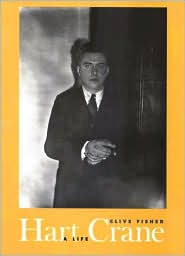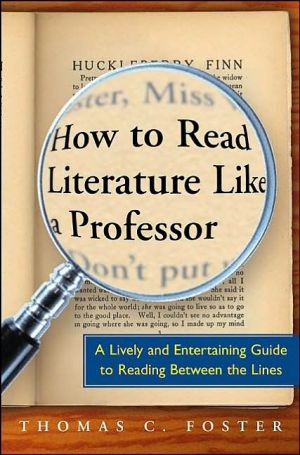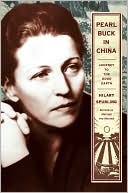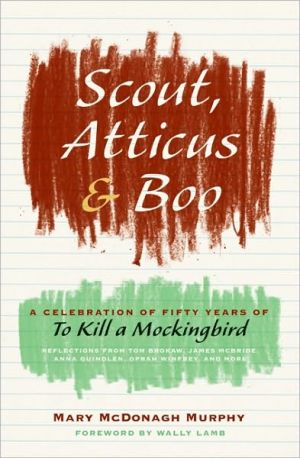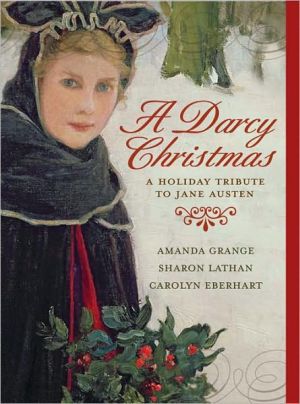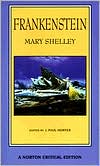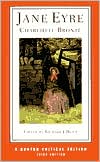Hart Crane: A Life
Hart Crane's life was notoriously turbulent, persistently nonconformist, and tragically short. Born in 1899, Crane became one of the most significant modernist American poets, yet his self-destructive tendencies - violent outbursts, massive drinking binges, and dangerous sexual pursuits - came to a catastrophic conclusion when at only thirty-two he threw himself from the stern of an ocean liner into the Gulf of Mexico. This new biography presents a full, frank portrait of the real Hart Crane,...
Search in google:
Hart Crane's life was notoriously turbulent, persistently nonconformist, and tragically short. Born in 1899, Crane became one of the most significant modernist American poets, yet his self-destructive tendencies - violent outbursts, massive drinking binges, and dangerous sexual pursuits - came to a catastrophic conclusion when at only thirty-two he threw himself from the stern of an ocean liner into the Gulf of Mexico. This new biography presents a full, frank portrait of the real Hart Crane, a poet attractive both for his flamboyance and passion for life, and for the magnificent sonorities of his work.New York Times Book Review[Fisher] captures the loneliness and pathos of Crane's existence and places his poems where the life illuminates them.
Hart Crane\ A Life\ \ By Clive Fisher\ Yale University Press\ \ Copyright © 2002 Clive Fisher.\ All rights reserved.\ ISBN: 0-300-09061-7\ \ \ Hart Crane's brief life is a story of rented accommodation and receding horizons, of the restlessness inherent in great expectations. For most of his thirty-two years, convinced as he was of life's possible perfection, he struggled and travailed — for a habitat hospitable to the muse, for friendships that were colloquial and true, for an erotic love that was indivisible, for a perfect poetry with cadences as irresistible as the sea's — and with each new disappointment, while hope held good at least, he moved on. It was a brave life, for all its recklessness, but one which could only bewilder its more pragmatic onlookers: even Crane's friends, aware that they had witnessed a remarkable destiny and half conscious of the yearnings that impelled it, looked back on the spectacle in confusion and decided that only a symbolic interpretation could apply — but whether they had known a pilgrim or a fugitive they went to their ancient graves undecided.\ As for Crane himself, while he never tired of explaining his poetry, he resisted more personal self-scrutiny: it lay outside the urgency of his life and seemed trivial beside membership of the visionary company of great poets to which he aspired. Why ponder his itinerancy or explain it? He was pledged to the literature and the myth of America and introspection could scarcely further his attendance on the colossus. Yet if he hadstood back for a moment from his nomadic life he might have looked to history itself to explain his restlessness, to history both national and ancestral. After all, to be American was once to be migratory and Hart Crane's voyaging pedigree was almost as long as his country's: when he came to speak for America he did so not as the offspring of the great immigrant landings of the late nineteenth century but as the scion of pioneers who had been involved in the mighty experiment of modern America almost from its inception and who from that time had tested its mythic possibilities.\ The wanderings began from England when in 1646 Hart Crane's paternal grandmother's Beardsley forebears embarked for America on the Planter and settled in Connecticut for a century and more of thrift and industry before moving again to northern Ohio at the beginning of the nineteenth century. They were part of a wider emigrant English tide which moved west as the interior was claimed and which included in its number Simeon Crane, who in 1801 braved a biblical forty-day passage by ox-team when he departed Saybrook, Connecticut, for the virgin land near Lake Erie, and John and Elizabeth Streator and their children, who established a settlement in what became Windham Township in 1803, the year Ohio was formally admitted to the Union.\ Streator, a kinsman of John Adams, second President of the United States, had fought in the Revolutionary War; his wife, no less a patriot, defended the Union by knitting stockings for soldiers during the Revolution, the Anglo-American War of 1812 and indeed the Civil War before dying aged 103. Their son Jason Streator, not content with serving two terms in the Ohio State Legislature, delivered himself of verse orations in the chamber and submitted his legislative reports in carefully tailored stanzas; and his daughter, Sylvina, who taught herself to read with the assistance of the Warren Chronicle, proceeded to a career as a schoolmistress whose most promising pupil, Lucretia Rudolph, married President Garfield. Sylvina, Hart Crane's great-grandmother, married the first white child to have been born in Shalersville Township, Edward Manley Crane; and his kinsman Rollin Crane had his hour of greatness when in 1863 he volunteered to General Grant to lead twenty-five men down the Mississippi River under heavy Confederate fire to establish the Union flag at Lower Vicksburg.\ Edward and Sylvina Crane had six children, including Hart Crane's grandfather Arthur Edward Crane, who recorded that his mother `lived to the advanced age of ninety-four years, a dainty little woman with sparkling dark eyes, happily retaining her faculties and the love of all who knew her to the end'. She died in 1914, with a world about to end, and her son, almost as long-lived, died in 1939, in the face of further apocalypse, aged ninety-three. In his waning years Arthur wrote verse and assumed the obligations of family historian: the premature deaths of his stalwart son and impetuous grandson left him as the custodian of Cranean lineage and he diligently recorded what he knew of the achievements of his antecedents. Arthur Crane and his siblings established Crane Brothers, the principal store in Garrettsville, Portage County, Ohio, and Arthur, through his offices as director of First National Bank and proprietorship of a maple syrup factory, became one of the most affluent and prominent citizens of the town and built a substantial house on Freedom Street with tall chimneys, balconies and Doric columns which later became the rectory for the nearby Catholic church. His brother Frederic also had commitments beyond Crane Brothers: he published his own poetry and as `Enarc' — Crane reversed — he reviewed drama and literature for the Garrettsville Journal. In 1870 Arthur married Ella Beardsley, and the couple had four children: Verdi, who died in her tenth year, Alice, Bessie, and Clarence Arthur, the future father of a great poet, who was born in April 1875.\ As the heir to commerce and prosperity Clarence was sent to village schools before attending Allegheny College at Meadville, Pennsylvania. There he befriended Byron Madden, later husband to his sister Bessie, later still his executor, but in the winter of 1894 he suddenly tired of the impracticalities of study and returned to Garrettsville unqualified. Madden recorded that his friend `then went on the road selling crackers for the National Biscuit Company of Akron, Ohio' and while roving for custom he dreamed and schemed for affluence and commercial autonomy. Ambition and impetuosity were a part of him, complements to the more obvious virtues that made him affable to the small town. He was known to be generous and gregarious; an optimist who recited parodies of Shakespeare and played the cornet dutifully and badly. He believed in hard work and easy play, in pretty girls and in the destiny of America. His sister Bessie thought him `the very best of brothers' and treasured her memories of his impetuosity: of how he gave his sisters his old Packard instead of exchanging it for a new car; and of how, seeing a woman crying on a street corner, he took her to the nearest grocery and bought her lots of vegetables.\ But there were more reckless acts than these, not least the dramatic courtship he unleashed on Garrettsville in the spring of 1898 when Grace Hart, a young beauty from Chicago, came to visit her aunt and cousin. Crane and his cousin Orsa Beardsley planned a picnic and proposed to escort Jessie Sykes and Grace Hart respectively. By the time the four friends returned home, however, affections had switched and Crane remained so fascinated by the metropolitan belle that on the day of her departure he boarded her Cleveland-bound train to instigate a courtship of letters, telegrams and flowers which was sustained until her capitulation and the handsome Chicago wedding which occurred on 1 June 1898, with a listing the following day in the Chicago Daily Tribune.\ Clarence Crane's bride was herself the daughter of old and distinguished families. Her maternal grandfather's family, the Beldens, claimed emigration from England in 1645 and emerge into historical focus with the rise to fortune of Josiah Belden, who was born in 1815 and served an apprenticeship as a jeweller before joining the first migrant wagon train to the Pacific Coast. The caravan convened at Independence, Missouri, in May 1841 and finally settled in northern California in November. Belden was in Monterey the following year but moved again to Santa Cruz where he ran a ranch store for two years for the American consul in California. In 1844 he became a Mexican citizen and was awarded land in the Sacramento Valley. He divided his time between ranching and business ventures in Monterey and San Francisco, survived unscathed the Mexican-American war for California of 1846 and emerged as a merchant in San Jose in 1849. He prospered greatly during the Gold Rush of that year but despite his success he remained popular among the Mexicans of the town, who not only bought his merchandise but entrusted him with quantities of their gold. He married Sarah Jones, another California pioneer, and moved to San Francisco, where he invested in real estate. He was the first mayor of San Jose and during the Civil War, in support of the Union, he contributed generously to the Sanitary Fund. He was a delegate to the Republican National Convention in 1876 and in 1881 he moved to New York City, where he became a director of the Erie Railroad and the founder of Belden prosperity.\ The Harts also asserted English ancestry and traced their descent as far back as Deacon Stephen Hart, a prominent member of the Reverend Thomas Hooker's Hartford church. Their Connecticut distinction notwithstanding, the Harts also felt the pull of the West and Joseph and Rosanna Hart, adventurous enough as the parents of thirteen children, established themselves and their offspring in Trumbull County, Ohio, in 1838 or thereabouts. Their ninth child, Clinton Orestes Hart, Hart Crane's grandfather, was born in 1839 and by the winter of 1860 he was a schoolmaster in Pennsylvania. It was not his vocation, however, and when, returning to Ohio through Pittsburgh, he heard of the bombardment of Fort Sumter which began the Civil War he enlisted in the Nineteenth Ohio Volunteer Infantry. Although his hearing was impaired in defence of the Union, Hart was not incapacitated from making a fortune in later years, not least through the operations of Hart Brothers, a clothing business established in Warren in 1878. In 1890 he associated with R.G. Sykes to form the Sykes Steel Roofing Company of Chicago and for twelve years he operated as a manufacturer and contractor with that enterprise before retiring with his family in 1903 to a substantial property at East 115th Street, Cleveland, Ohio, in the eyes of local esteem `a first-class business man, a good citizen, a man who has many friends ... and an enthusiastic Republican'.\ In 1865 he had married twenty-five-year-old Elizabeth Belden of Akron, a schoolmistress whom he had met as a fellow student at Western Reserve Seminary. She became an abiding, if indistinct, presence in the life of the poet, who adored his grandmother as the one unfailing figure of love and constancy in his family. She liked to reminisce about local and family history and was fond of remembering the journey she made on horseback to Cleveland in April 1865 to see the body of Abraham Lincoln on its 1,700-mile funeral circuit between Washington and the President's final resting place in Springfield, Illinois. Her life was otherwise without adventure and her surviving correspondence bespeaks a woman content with her needlework, her domestic routine and the local news.\ There was one exotic divergence: in 1898, the year in which they gave away their daughter to Clarence Crane, the Harts saw their country emerge as an imperial power following American victory in the Spanish—American War and the consequent forfeiture by Spain of many of her colonial possessions. Puerto Rico and the Philippines were ceded to the United States, and Cuba, attaining notional independence, became an American fiefdom. In the course of this transaction the fate of Cuba's nearby satellite, the Isle of Pines, considered Cuban by Madrid, was overlooked, and for some years the territory was without official allegiance. American interests, confident of American expansionism, assumed it would only be a matter of time before Washington claimed the island, however, and invested accordingly. Numerous people built second homes or established citrus farms there, the Clinton Harts among them, and Cleveland and Trumbull County soon received report of `this little plantation ... in plain view of the Caribbean sea' with its `pleasant and commodious bungalow' which the Harts had built and its `large grove of orange, grape fruit and lemon trees' where they proposed to `avoid the long, cold winters of the north'.\ But even under southern skies some unhappinesses could not be forgotten and if there were prolepses of tenacity, longevity and distinction among Hart Crane's forefathers, there were also graver intimations. The Harts had three children: Harry, born in 1866, Frank, born in 1869, and Grace, born in 1878. Harry died in 1876, the victim of scarlet fever, and his memory soon dimmed with the age's acceptance of infant mortality. Frank Hart also died young — in January 1893 — but his memory proved an altogether more delicate problem for which suppression appears to have been considered the best solution. Little is known of his career before his death: he had married a young woman named Zell Smith from Warren and in October 1892 the couple had a daughter, Helen. He worked in Chicago as a manager for the Sykes Iron and Steel Roofing Company, a position one assumes his father was involved in securing, and on his death certificate his occupation was given as `manufacturer'. But his end itself remains mysterious. A first report, in the Warren Daily Tribune of 21 January 1893, indicated that Hart had `died very suddenly' the previous day at his home at 429 West Polk Street, Chicago, `about noon of heart disease'. On 25 January, however, a fuller report appeared in the Western Reserve Chronicle, published to mark the funeral in Warren. Besides extolling the deceased as `a remarkably bright young business man' whose career to date had been `unusually good', the newspaper paused to praise him as `a warm, thoughtful and faithful friend'. As for present distress:\ Mr Hart's death was very sudden and a terrible shock to his wife and parents. He had returned from an eastern trip the earlier part of the week and was apparently as well as usual, although he had been troubled for some time with insomnia. Feeling indisposed on Friday he went home, and to induce sleep took a dose of morphine. His rest was thought to be easy until several hours afterwards when his heavy breathing attracted attention, and by the time a physician had reached him, death had ensued.\ On the death certificate the coroner, James McHale, contented himself with the plainest verdict, that Hart had died `from accidentally taking a[n] overdose of Morphine'. But the newspaper reports are contradictory. The initial assumption, mentioned by the Warren Daily Tribune, that heart disease had caused death, was presumably based on the reaction of the doctor called to the scene, who learned of the disturbed breathing prior to decease and applied a plausible, if imprecise, diagnosis. But Hart's parents would surely have known if he had suffered from heart disease, especially since such a condition in one so young is rare and tends to be congenital. If they did know, how could they have considered their son's death the `terrible shock' recorded in the Western Reserve Chronicle? And if he had indeed suffered from such an affliction how could the newspaper or the dead man's family have claimed that in the days immediately prior to his end he was `apparently as well as usual'?\ (Continues...)\ \ \ Excerpted from Hart Crane by Clive Fisher. Copyright © 2002 by Clive Fisher. Excerpted by permission. All rights reserved. No part of this excerpt may be reproduced or reprinted without permission in writing from the publisher.\ \
\ BooklistFisher traces Crane's short life . . . as the steady, inevitable unwinding of a soul.\ \ \ \ \ Daniel Mark EpsteinA penetrating and absorbing biography...[A] seamless narrative of compelling momentum. \ —New York Times Book Review\ \ \ New York Times Book Review[Fisher] captures the loneliness and pathos of Crane's existence and places his poems where the life illuminates them.\ \ \ \ \ Publishers WeeklyElusive, cryptic, and often bewildering, Harold Hart Crane's poetry demands more than a token effort to comprehend; readers should expect to make a similar investment when trying to understand the man himself. Crane (1899-1932) announced at age 11 that he was going to be a poet, not necessarily good news to his battling, soon-to-be-divorced parents. Feeling abandoned and alone, the psychosomatic Crane attempted suicide as a teenager. In New York, he began a lifelong pattern: writing poetry, living in rented rooms, drinking, developing male friendships (almost exclusively heterosexual), and seeking out homosexual encounters (especially with sailors, which connected him to his great love, the sea). Some of his poetry reflects these encounters in oblique terms, nonetheless revealing loss and regret. Increasingly tortured by drink, Crane managed to maintain a generosity of spirit and a childlike faith in certain ideals of life. There were times when he could not write, but his imagination was never stilled. Crane wandered from New York to London to Paris to Mexico, never finding a resting place until he threw himself from a moving ship into the deadly waters of the Gulf of Mexico. What remains is his poetry. Fisher, author of Noel Coward and Cyril Connolly: A Nostalgic Life, rewards the reader with an exacting book that makes knowing Hart Crane a vivid possibility. Recommended for public and academic libraries. Robert L. Kelly, Fort Wayne Community Schs., IN Copyright 2002 Cahners Business Information.\ \ \ \ \ Library JournalElusive, cryptic, and often bewildering, Harold Hart Crane's poetry demands more than a token effort to comprehend; readers should expect to make a similar investment when trying to understand the man himself. Crane (1899-1932) announced at age 11 that he was going to be a poet, not necessarily good news to his battling, soon-to-be-divorced parents. Feeling abandoned and alone, the psychosomatic Crane attempted suicide as a teenager. In New York, he began a lifelong pattern: writing poetry, living in rented rooms, drinking, developing male friendships (almost exclusively heterosexual), and seeking out homosexual encounters (especially with sailors, which connected him to his great love, the sea). Some of his poetry reflects these encounters in oblique terms, nonetheless revealing loss and regret. Increasingly tortured by drink, Crane managed to maintain a generosity of spirit and a childlike faith in certain ideals of life. There were times when he could not write, but his imagination was never stilled. Crane wandered from New York to London to Paris to Mexico, never finding a resting place until he threw himself from a moving ship into the deadly waters of the Gulf of Mexico. What remains is his poetry. Fisher, author of Noel Coward and Cyril Connolly: A Nostalgic Life, rewards the reader with an exacting book that makes knowing Hart Crane a vivid possibility. Recommended for public and academic libraries. Robert L. Kelly, Fort Wayne Community Schs., IN Copyright 2002 Cahners Business Information.\ \
